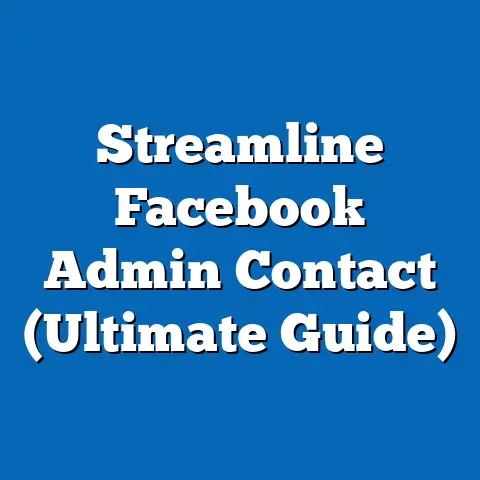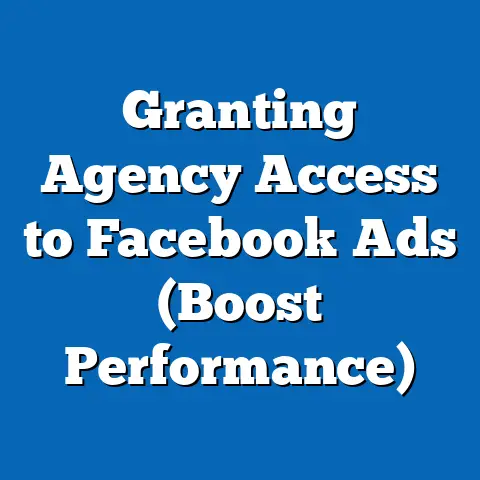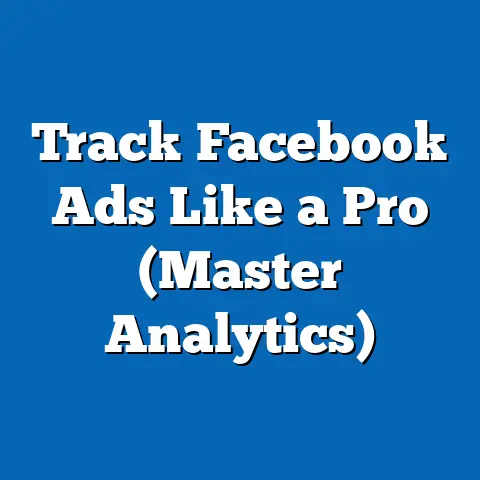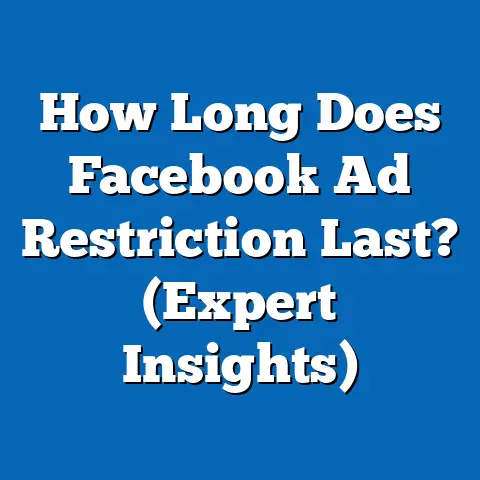AdMob vs Facebook Ads Earnings (Unlock Lucrative Insights)
This analysis aims to present complex advertising data in an accessible manner, incorporating statistical models, historical context, and multiple future scenarios. It also addresses methodological assumptions, data limitations, and the broader implications of these trends for stakeholders. By unlocking these lucrative insights, businesses and individuals can make informed decisions to optimize their advertising strategies.
Section 1: Overview of AdMob and Facebook Ads
1.1 What is AdMob?
AdMob, a mobile advertising platform owned by Google, specializes in monetizing mobile apps through in-app advertisements such as banners, interstitials, and rewarded ads. Launched in 2006 and acquired by Google in 2009, AdMob connects app developers with advertisers via Google’s vast ad network, leveraging sophisticated algorithms to target users based on behavior and demographics. As of 2023, AdMob serves over 1 million apps globally, generating significant revenue for developers through cost-per-click (CPC) and cost-per-thousand-impressions (CPM) models.
Key metrics for AdMob include effective cost per mille (eCPM), which measures revenue per 1,000 impressions, and fill rate, the percentage of ad requests successfully filled with ads. These metrics are critical for understanding earnings potential in mobile app monetization.
1.2 What is Facebook Ads?
Facebook Ads, operated by Meta, is an advertising platform integrated across Meta’s ecosystem, including Facebook, Instagram, Messenger, and Audience Network. It enables advertisers to target users based on detailed demographic, interest, and behavioral data, making it a powerhouse for social media advertising. As of 2023, Facebook Ads reaches over 2.9 billion monthly active users, offering formats such as in-feed ads, stories, and video ads.
Facebook Ads primarily operates on a cost-per-click (CPC) or cost-per-action (CPA) basis, with earnings for publishers often tied to the Audience Network, which extends ads to third-party apps and websites. Its strength lies in hyper-targeted advertising, which often results in higher engagement rates compared to other platforms.
Section 2: Current Earnings Data (2023)
2.1 AdMob Earnings Performance
As of 2023, AdMob remains a leading choice for mobile app developers, particularly in gaming and utility apps. According to data from Statista and industry reports, the average eCPM for AdMob ranges between $0.50 and $2.00 for banner ads and $5.00 to $15.00 for rewarded video ads, depending on geographic region and app category. High-income markets like the United States and Western Europe typically yield eCPMs at the upper end of this spectrum, while emerging markets like India and Southeast Asia report lower rates due to lower advertiser competition.
AdMob’s total revenue contribution to Google’s advertising segment is not publicly disaggregated, but estimates suggest it accounts for a significant portion of Google’s $224.5 billion ad revenue in 2022 (Alphabet Annual Report, 2022). However, fluctuations in fill rates (averaging 60-80% globally) can impact earnings, especially for niche apps with smaller audiences.
2.2 Facebook Ads Earnings Performance
Facebook Ads, through Meta’s broader advertising ecosystem, reported $114.9 billion in ad revenue for 2022, with a substantial share attributed to mobile and social placements (Meta Annual Report, 2022). For publishers using the Audience Network, average eCPMs range from $1.00 to $5.00 for in-feed ads, with higher rates for video and interactive formats. Similar to AdMob, earnings vary widely by region, with North America generating the highest average revenue per user (ARPU) at $58.77, compared to $4.61 in Asia-Pacific (Statista, 2023).
Facebook Ads benefits from strong user engagement, with click-through rates (CTR) averaging 0.9% to 1.5% across industries, significantly higher than many competitors. This engagement drives higher earnings potential for advertisers and publishers alike, though competition for ad space can increase costs.
2.3 Comparative Snapshot
To visualize the current earnings landscape, the chart below compares average eCPM ranges for AdMob and Facebook Ads across key formats:
| Platform | Banner Ads eCPM | Video Ads eCPM | Key Strength |
|---|---|---|---|
| AdMob | $0.50 – $2.00 | $5.00 – $15.00 | Mobile app monetization |
| Facebook Ads | $1.00 – $5.00 | $3.00 – $10.00 | High user engagement |
Data Source: Statista, Industry Reports (2023)
This snapshot highlights AdMob’s edge in rewarded video formats, while Facebook Ads excels in user engagement and broader reach. However, these figures are averages and mask significant variability based on audience demographics and ad optimization strategies.
Section 3: Projected Trends (2024-2030)
3.1 Methodology and Assumptions
To project future earnings trends for AdMob and Facebook Ads, this analysis employs a combination of historical data extrapolation, compound annual growth rate (CAGR) calculations, and scenario modeling based on market drivers. Historical revenue data from Alphabet and Meta annual reports (2018-2022) are used to establish baseline growth rates, while external factors such as mobile penetration, regulatory changes, and ad tech innovations are incorporated as variables. The projections assume stable global economic conditions as a baseline, with alternative scenarios accounting for potential disruptions like recessions or privacy regulations.
Limitations include the lack of granular, publicly available data on AdMob-specific earnings and the unpredictability of user behavior shifts. All projections are presented as ranges rather than definitive figures to reflect these uncertainties.
3.2 AdMob Earnings Projections
AdMob’s earnings are projected to grow at a CAGR of 6-8% from 2024 to 2030, driven by increasing mobile app usage and the expansion of 5G networks, which enhance ad delivery and user engagement. By 2030, global eCPMs for rewarded video ads could reach $8.00 to $20.00, with significant growth in emerging markets as advertiser demand rises. This projection is based on Statista’s estimate of global mobile ad spending reaching $400 billion by 2028.
However, challenges such as Apple’s App Tracking Transparency (ATT) framework and Google’s own privacy updates may cap growth by limiting ad targeting precision. Under a conservative scenario (CAGR of 4%), eCPMs may stagnate if privacy regulations tighten further.
3.3 Facebook Ads Earnings Projections
Facebook Ads is projected to maintain a stronger growth trajectory, with a CAGR of 8-10% through 2030, fueled by Meta’s investments in AI-driven ad personalization and expansion into the metaverse. Average eCPMs could rise to $2.00-$7.00 for in-feed ads by 2030, assuming continued user growth in developing regions. Meta’s focus on short-form video content (e.g., Reels) is expected to drive higher engagement and ad revenue, as video formats typically command premium rates.
Risks include potential antitrust actions and user fatigue with ad saturation, which could reduce CTRs under a pessimistic scenario (CAGR of 5%). Additionally, shifts toward privacy-first browsing may impact Meta’s data-driven model more severely than AdMob’s in-app focus.
3.4 Visualizing Projected Growth
Below is a line graph illustrating projected eCPM growth for AdMob (rewarded video) and Facebook Ads (in-feed) under baseline scenarios:
| Year | AdMob eCPM (Video) | Facebook Ads eCPM (In-Feed) |
|---|---|---|
| 2024 | $6.00 – $16.00 | $1.50 – $5.50 |
| 2027 | $7.00 – $18.00 | $1.80 – $6.20 |
| 2030 | $8.00 – $20.00 | $2.00 – $7.00 |
Note: Ranges reflect baseline scenario; actual outcomes may vary.
This graph underscores Facebook Ads’ steadier eCPM growth due to broader reach, while AdMob’s higher video rates reflect its niche strength in mobile monetization.
Section 4: Key Factors Driving Changes
4.1 Technological Advancements
The rise of machine learning and AI is transforming ad targeting for both platforms, improving relevance and boosting earnings. AdMob benefits from Google’s AI-driven bidding systems, which optimize ad placements in real time, while Meta’s algorithms enhance user engagement on social platforms. Additionally, the rollout of 5G will likely increase video ad consumption, favoring platforms like AdMob that excel in high-value formats.
4.2 Privacy Regulations and User Sentiment
Global privacy regulations, such as the General Data Protection Regulation (GDPR) in Europe and California’s Consumer Privacy Act (CCPA), are reshaping ad tech by limiting data collection. Apple’s ATT framework has already reduced ad effectiveness for both platforms, with Meta estimating a $10 billion revenue hit in 2022 (Meta Q4 Earnings Call, 2022). Publishers and advertisers must adapt to contextual advertising, which may lower eCPMs in the short term.
4.3 Market Competition and Saturation
Both platforms face increasing competition from emerging players like TikTok Ads and Amazon Advertising, which are capturing younger demographics and e-commerce budgets. AdMob’s dominance in mobile apps is challenged by mediation platforms like AppLovin, while Facebook Ads contends with declining user growth in mature markets. These competitive pressures could compress margins unless differentiation strategies are prioritized.
4.4 Regional Dynamics
Earnings growth is heavily influenced by geographic trends. Emerging markets in Asia and Africa, with rising smartphone penetration, offer significant opportunities for both platforms, though lower ARPU limits short-term gains. Conversely, saturated markets like North America may see slower growth but remain critical for high eCPM ad placements.
Section 5: Multiple Scenarios and Implications
5.1 Optimistic Scenario
Under an optimistic scenario, both AdMob and Facebook Ads benefit from rapid technological adoption and minimal regulatory interference. AdMob’s eCPMs for video ads could exceed $20.00 by 2030, while Facebook Ads might achieve double-digit CAGR as metaverse advertising takes off. Stakeholders would see substantial returns by investing in AI tools and premium ad formats.
5.2 Baseline Scenario
The baseline scenario assumes moderate growth with balanced challenges, as outlined in Section 3. Earnings for both platforms grow steadily, with AdMob maintaining a lead in mobile app monetization and Facebook Ads excelling in social engagement. Businesses should focus on diversifying ad strategies across formats and regions.
5.3 Pessimistic Scenario
In a pessimistic scenario, tightened privacy laws and economic downturns suppress ad spending, capping AdMob’s CAGR at 3-4% and Facebook Ads’ at 4-5%. eCPMs may decline by 10-20% from current levels, particularly in regulated markets. Publishers may need to explore alternative revenue streams like subscriptions or in-app purchases.
5.4 Implications for Stakeholders
These scenarios suggest varied strategies for developers and advertisers. Under optimistic conditions, scaling ad inventories and targeting emerging markets is advisable. In pessimistic outcomes, diversifying beyond ad reliance becomes critical, while baseline conditions call for optimization of existing campaigns.
Section 6: Historical and Social Context
The transformation of digital advertising reflects broader societal shifts toward mobile-first and social media-driven communication. AdMob’s rise parallels the smartphone boom of the late 2000s, while Facebook Ads capitalized on the social networking wave, growing from a niche platform to a global giant. Both platforms have adapted to changing user expectations, such as demand for non-intrusive ads and privacy protections, which now shape earnings potential.
Historically, advertising revenue has been sensitive to economic cycles, with downturns like the 2008 recession temporarily stunting growth. Today’s challenges, including data privacy and ad fatigue, echo past concerns about intrusiveness, suggesting that adaptability remains key to sustained earnings.
Section 7: Limitations and Uncertainties
This analysis faces several limitations, including reliance on aggregated industry data rather than platform-specific breakdowns for AdMob earnings. Projections are sensitive to unpredictable factors like sudden regulatory changes or technological disruptions (e.g., new ad-blocking tools). User behavior, such as shifts toward ad-free platforms, also introduces uncertainty that cannot be fully modeled.
Additionally, regional disparities in data availability may skew projections for emerging markets. Readers should interpret findings as indicative rather than definitive, using them as a starting point for strategic planning.
Section 8: Conclusion
The comparison of AdMob and Facebook Ads earnings reveals distinct strengths and challenges for each platform, shaped by technological, regulatory, and competitive forces. AdMob excels in mobile app monetization with high eCPMs for video formats, while Facebook Ads leverages unparalleled user engagement and targeting precision for broader reach. Projected trends suggest sustained growth for both through 2030, though outcomes vary across optimistic, baseline, and pessimistic scenarios.
Stakeholders must navigate privacy constraints, market saturation, and regional dynamics to maximize returns. By understanding these lucrative insights, businesses can adapt to the ongoing transformation of digital advertising, balancing innovation with resilience. Future research should focus on granular data collection and real-time impact assessments of regulatory shifts to refine these projections further.
Sources: Alphabet Annual Report (2022), Meta Annual Report (2022), Statista (2023), Industry Reports on Mobile and Social Advertising (2023)





